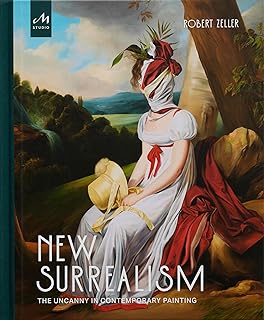An exhibition at the Magnani-Rocca Foundation delves into the connection between Surrealism and Italy, shedding light on this intriguing relationship. As part of the international initiatives celebrating the centenary of Surrealism, the exhibition offers a unique perspective on how Italy engaged with this influential artistic movement. While various events and conferences in Italy have explored avant-garde studies, the Magnani-Rocca Foundation stands out for its comprehensive retrospective exhibition, presenting over 150 works that span from the 1920s to the 1960s.
The exhibition, titled “Il Surrealismo e l’Italia” (Surrealism and Italy), showcases works from both public museums and private foundations in Italy, highlighting the intricate ties between the country and Surrealism. Through a historical lens, the exhibition not only celebrates artists who reinterpreted Surrealism but also emphasizes lesser-known aspects such as collecting and editorial productions, offering a nuanced understanding of how the avant-garde movement manifested in Italy.
Curated by Alice Ensabella, Alessandro Nigro, and Stefano Roffi, the exhibition features works by renowned international artists like Magritte, Dalí, and Ernst, exploring various artistic mediums such as painting, photography, collage, and sculpture. By showcasing pieces from significant Italian collections, including those of Peggy Guggenheim and Arturo Schwarz, the exhibition underscores Italy’s unique position in the global dissemination of Surrealism.
One of the standout pieces on display is Magritte’s painting “L’épreuve du sommeil” from 1926, sourced from the collection of entrepreneur and collector Enrico Lucci. The exhibition also highlights the contributions of Italian artists who embraced Surrealism, categorizing them into two groups: the “Italian Surrealists” like Leonor Fini and Fabrizio Clerici, known for their visionary and neo-romantic styles, and artists who integrated Surrealism into the post-war Italian artistic identity.
Through a curated selection of artworks, the exhibition paints a vivid picture of how Surrealism influenced Italian art, transcending ideological conflicts and paving the way for audacious artistic explorations. By examining the multifaceted impact of Surrealism on Italian art, the exhibition at the Magnani-Rocca Foundation offers a compelling narrative that enriches our understanding of the broader Surrealist movement.
Serena Trinchero, a scholar and professor of contemporary art history at Pisa University, provides valuable insights into the exhibition, drawing attention to the intricate relationship between Surrealism and Italy. Her expertise in the field adds depth to the exhibition’s exploration of how Surrealism intersected with Italian art and culture, making it a must-see for art enthusiasts and scholars alike.
📰 Related Articles
- Unveiling the Unique Romance of ‘Ghost’ Through Cinematic History
- Unveiling the Nuances of Japanese Culture Through Travel Experiences
- Lost Modigliani Masterpiece Authenticated: Unveiling Artistic Legacy
- London Archaeologists Restore Rare Roman Frescoes, Unveiling Artistic Fusion
- Laura Langer’s ‘Execution’ Exhibition Redefines Artistic Boundaries






